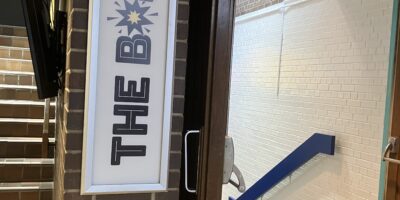Well, it was bound to happen eventually.
COVID-19 made its first significant appearance at the University of Waterloo in early November, when a total of five students caught the virus in the university’s first and only outbreak so far. The first of these came on November 4th, and was followed another one the next day, and then three new ones on the 9th. The outbreak was declared over by Region of Waterloo Public Health and Emergency Services on November 17th, eight days after the last positive case.
These were not the first cases in the campus community, as it saw three isolated cases during the month of October, but they did mark the first time internal transmission was detected, hence the reason it was declared an outbreak. There have also been a total of six cases since the outbreak ended, bringing the University of Waterloo’s total to 14. The last of these positive tests occurred on December 3rd.
The first outbreak came about two and a half months after students began arriving on campus in late August, prior to the beginning of classes. Upon their arrival, they were welcomed with a whole new set of rules and regulations put in place to prevent the spread of COVID-19. One-way staircases, foot-operated elevators, and Plexiglas dividers in many common areas are among the many physical modifications made to the campus in order reduce contact points and encourage social distancing.
Along with these, students have also been expected to respect many guidelines and instructions pertaining to their behavior and actions. Since the beginning of the term, restrictions on guests have forbidden students from having any visitors in their room who are not residents of the same building. However, following a province-wide uptick in case totals, all residents received an email on September 25th informing them of a change to the policy which limited visitors to only one at a time, still from within their building.
Additionally, masks have been made mandatory in all public spaces (except when eating in designated areas where Plexiglas separators prevent students from spreading droplets), and most common areas such as floor lounges have occupancy limits.
The lack of students on campus has also most likely helped in limiting the spread of the virus on campus. In fact, with Village 1 and Ron Eydt Village closed, Claudette Millar Hall is the only one of the university’s traditional-style residences housing students, almost all of which are in their first year.
These four cases make the University of Waterloo the second university in Waterloo to see an outbreak in its residence community. Its next-door neighbour, Wilfrid Laurier University, had an outbreak which began with four cases on September 20th and had seen a total of 27 positive tests by the time the outbreak on the UWaterloo campus began. This total has since risen to 33.
While it could be said that the University of Waterloo has, comparatively speaking, done a good job of holding off the coronavirus, the outbreak and the cases which have occurred since raise concerns for both students currently living on campus and those who are thinking of moving in for the winter term.
Many current residents have said that the presence of COVID-19 in the residence community has made them take extra precautions, with some also opting to temporarily return home during the outbreak in November until they felt it was safe to move back. It is not yet known if further rules or changes will be imposed on residents of CMH or the residence community as a whole. Some students are even concerned that residence could close if the number of cases gets too high, but that is only worried speculation for the time being, as the university has not indicated that it has any plans of doing so.
For many possible future residents, the decision to move to Waterloo for the winter term will be contingent on how the university handles cases and outbreaks in residence. If it is done safely and efficiently, they will be more confident when it comes to moving into residence. Conversely, if an outbreak should spiral out of control and a sharp rise in cases should occur, many could be reluctant to make the move. Even if the campus is clean by January, a large flare-up of cases would demonstrate that an outbreak can occur and become a serious problem at any time.
In short, it is commendable that the University of Waterloo was able get as far as it did without COVID-19 showing itself, but it is here now, and that is cause for concern. Students in residence should continue to follow COVID-19 guidelines to ensure that another outbreak does not occur.
UW Info: https://uwaterloo.ca/coronavirus/news/case-tracking-covid-outbreak-claudette-millar-hall-includes




Leave a Reply